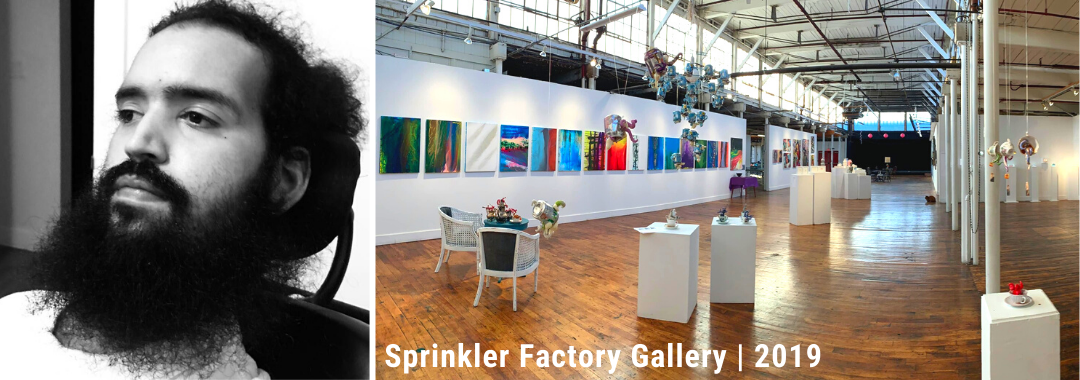
Cesar Rodriguez
Assistive Technology and Employment
At a young age Cesar Rodrigues was diagnosed with Spinal Muscular Atrophy which affects the skeletal muscles responsible for movement caused by a loss of motor neurons. Because he was an artist who originally used typical paint brushes and pencils, symptoms of his condition became an obstacle. The muscle weakness worsens with age, so when Cesar’s hand lost strength he changed his process by using the technique of pouring paint and letting gravity help manipulate it. After becoming unable to use both of his hands for painting, he needed another solution to continue his work; that’s where Easterseals Massachusetts (ESMA) came into the picture. After being told many service providers that his dreams for painting were impossible or too expensive, Easterseals was able to engineer a custom home painting system using asisitve technolgoy. Cesar is not only able to live a fuller life with his ultimate passion (painting) he is now a local a professional artist that supports himself through his incredible work.

"Life can take you in many different directions. Not everything ends up how one might expect, but the beauty of life is in the possibilities of those different routes." Artist, Cesar Rodrigues, conveys this idea in his work, stating his paintings, “...take your mind in many directions, leaving the door open for conversation.”
Originally, Cesar was utilizing ESMA services to acquire an adaptive bed control, a device that can be controlled by cell phone or Amazon Echo/Google Home. But, during installation of the bed, Cesar had expressed to his ESMA Assistive Technology therapist, Tom Quattrociocchi, how much he missed being able to paint during the installation of the adaptive bed.
After sharing his preliminary design ideas for handling the canvas and pouring the paint, the team at Easterseals built Cesar a custom painting box. Tom, an engineer and Assistive Technology expert, used the basic concept of the design and modified it based on available materials, the method of control he required, flexibility and versatility of use. Tim explained he wanted to,
“...make [the box] easier to build, maintain and move,” for him. The box uses Bluetooth technology, through which Cesar can pour paint from a cup attached to a linear actuator. Next, he can tilt the canvas in various directions to spread the paint around into the mysterious terrains or roads that his style commonly depicts.”
Gallery 2 group exhibition “Artifacts and Incidents, memory and the creative process."
This is both a story of individual success for Cesar, but also a testament to Easterseals commitment to the principles of a person-centered “itinerate service model.” The itinerate model is so important because it ensures Assistive Technology (AT) services are provided in someone’s home, in their school, or more importantly; in the real environment that the technology or devices will be used. Eric Odelfieson, VP of Assistive Technology Services, explained;
“Often, AT services are evaluated and prescribed in a clinical environment, wherein the client inevitably faces complications or hardships implementing the suggested services after the fact. Our clinicians are not only experts in their technical skill set, but also experts in being able to identify individual goals in unique contexts. We’re not trying to create skills, the skills exist, we’re circumventing a problem and getting people there!”
Cesar, for example, was in search of a bed control when he realized through organic conversation with the therapist that Easterseals may be able to help him devise a piece of technology to help him start painting again- a passion he feared would just inevitably fade away. Easterseals was able to help Cesar not only delve back into his passion but expand his independence with the use of technology.
Cesar's story exemplifies the importance of ESMA’s Assistive Technology Program while also demonstrating how limitless the possibilities are in this ever-evolving field. Cesar’s work has now been featured in Agora Gallery, Dzian Gallery, Arts Worcester, and Sprinkler Factory.


